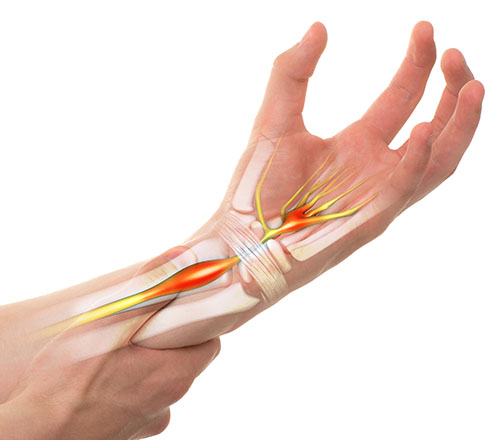| What is Carpal Tunnel Syndrome?2 August 2017 Do you ever wake up with a tingling sensation and numbness in your thumbs and fingers? Have you been experiencing any pain in the wrists or hands? Carpal tunnel syndrome is one of the most common wrist conditions that affect around a third of the population at some point in their lives and is best to catch early. Find out what is really bothering you with our quick guide that will help you get acquainted with the syndrome and find the right solution for your problem. What Is Carpal Tunnel Syndrome?Carpal tunnel syndrome (CTS) is a medical condition in which the median nerve is squeezed where it passes through the wrist, which may lead to pain, numbness and tingling in the thumb, index and middle finger.
The carpal tunnel is the passageway in the hand, made up of eight wrist bones and the ligament. CTS occurs when the median nerve, which passes right through that tightly-spaced tunnel, becomes pinched, most often by swelling of the tendons or fluid collection.
What are the Symptoms of Carpal Tunnel Syndrome?The symptoms usually begin gradually and are worse during the night. One of the first signs that people suffering from CTS notice is waking up with numbness and tingling in their fingers and hands. The most common symptoms include:
Who is Most at Risk?While the main cause of carpal tunnel syndrome is still unknown, we know that women, as well as middle-aged and elderly people are more often affected by it. Other common conditions that may increase your chances of developing CTS include:
Certain physical activities are also known to lead to CTS:
Treatment of Carpal Tunnel SyndromeCarpal tunnel syndrome can be treated either with surgery or by wearing a wrist splint. While surgery may be needed if there is severe compression of the median nerve or if the pain does not improve with any other treatment, most cases can, fortunately, be easily treated by wearing a wrist splint. This is also the non-invasive treatment recommended by most health professionals. For best results you should wear a brace during the night as well as during the day, especially during those activities that may put additional stress on the wrist. Choosing the Right Wrist BraceResting splints are perfect if your symptoms are worse during the night, while working splints are the right choice when your symptoms are brought on by particular activities. At WristSupports.co.uk we have a broad range of all types of wrist braces designed to aid you in your recovery from carpal tunnel syndrome. Pick the right wrist brace for your condition from our selection of wrist supports for carpal tunnel syndrome. Do you have a question to ask or something to add? Why not leave us a comment below or find us on Facebook or Twitter. |
FREE UK DELIVERYon orders of £40 and over. EXPERT CUSTOMER SUPPORTRead our reviews. EASY PRODUCT RETURNSwith our 30 day returns policy. |


